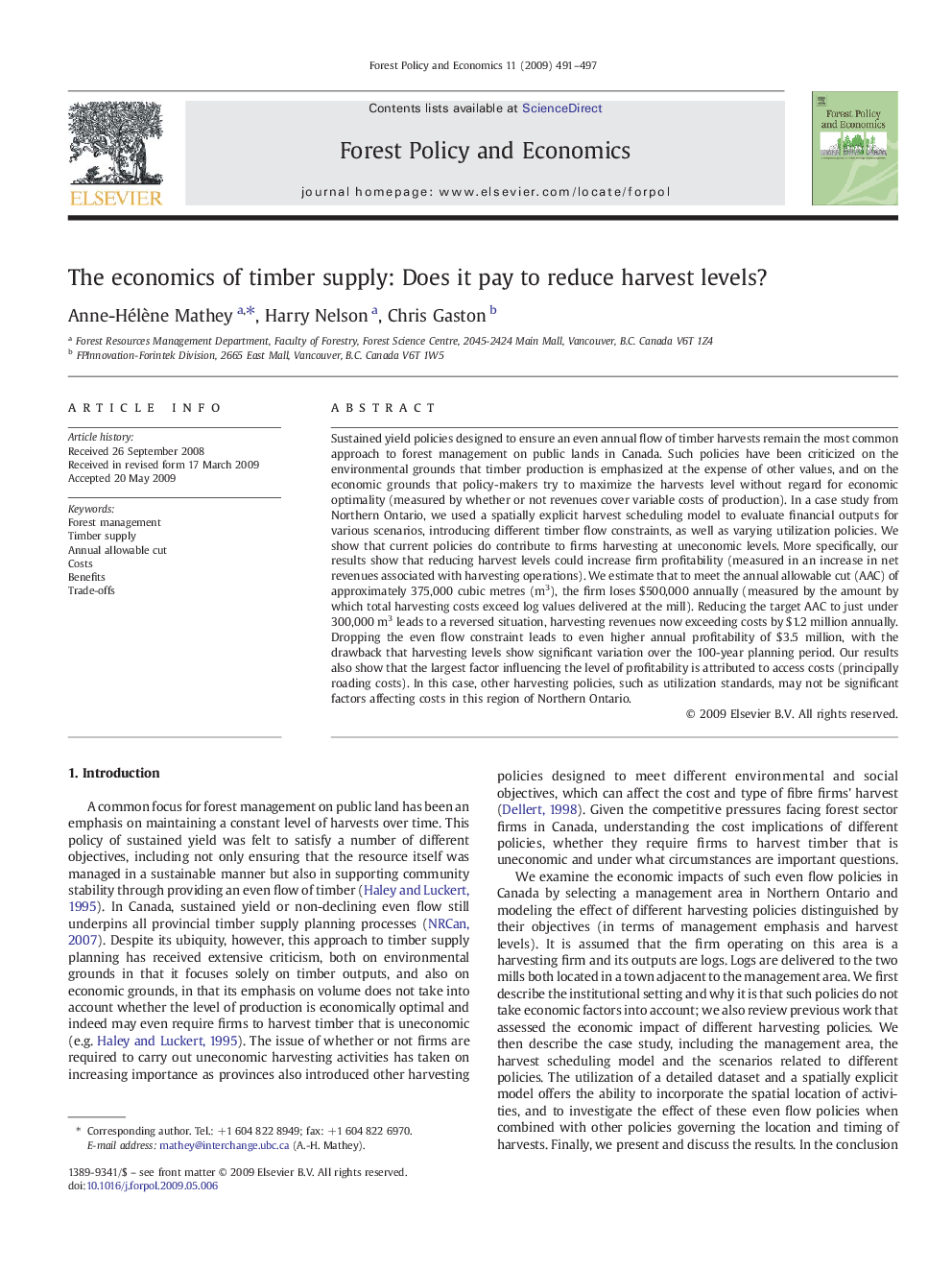| Article ID | Journal | Published Year | Pages | File Type |
|---|---|---|---|---|
| 91258 | Forest Policy and Economics | 2009 | 7 Pages |
Sustained yield policies designed to ensure an even annual flow of timber harvests remain the most common approach to forest management on public lands in Canada. Such policies have been criticized on the environmental grounds that timber production is emphasized at the expense of other values, and on the economic grounds that policy-makers try to maximize the harvests level without regard for economic optimality (measured by whether or not revenues cover variable costs of production). In a case study from Northern Ontario, we used a spatially explicit harvest scheduling model to evaluate financial outputs for various scenarios, introducing different timber flow constraints, as well as varying utilization policies. We show that current policies do contribute to firms harvesting at uneconomic levels. More specifically, our results show that reducing harvest levels could increase firm profitability (measured in an increase in net revenues associated with harvesting operations). We estimate that to meet the annual allowable cut (AAC) of approximately 375,000 cubic metres (m3), the firm loses $500,000 annually (measured by the amount by which total harvesting costs exceed log values delivered at the mill). Reducing the target AAC to just under 300,000 m3 leads to a reversed situation, harvesting revenues now exceeding costs by $1.2 million annually. Dropping the even flow constraint leads to even higher annual profitability of $3.5 million, with the drawback that harvesting levels show significant variation over the 100-year planning period. Our results also show that the largest factor influencing the level of profitability is attributed to access costs (principally roading costs). In this case, other harvesting policies, such as utilization standards, may not be significant factors affecting costs in this region of Northern Ontario.
